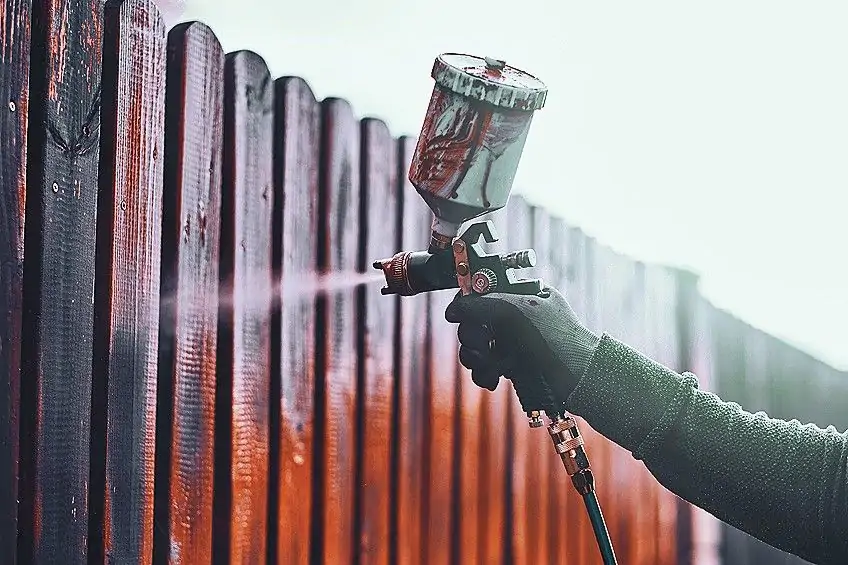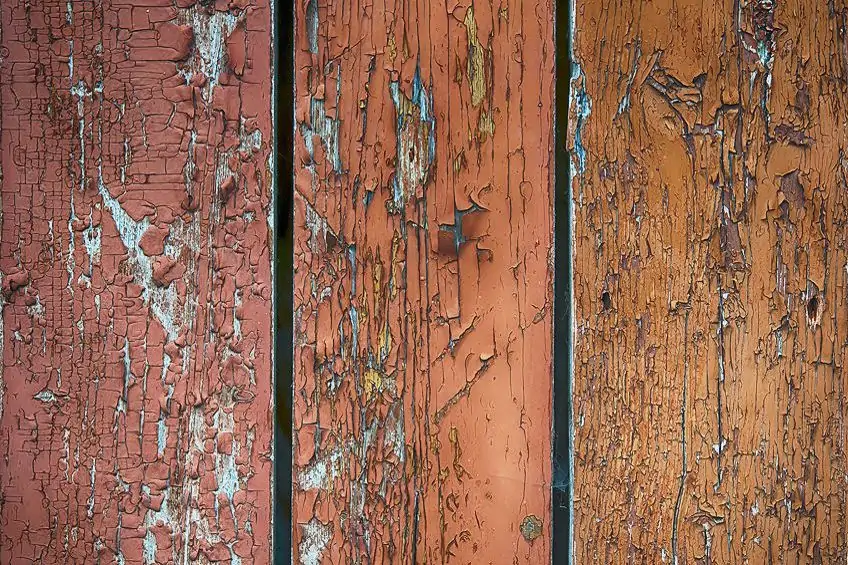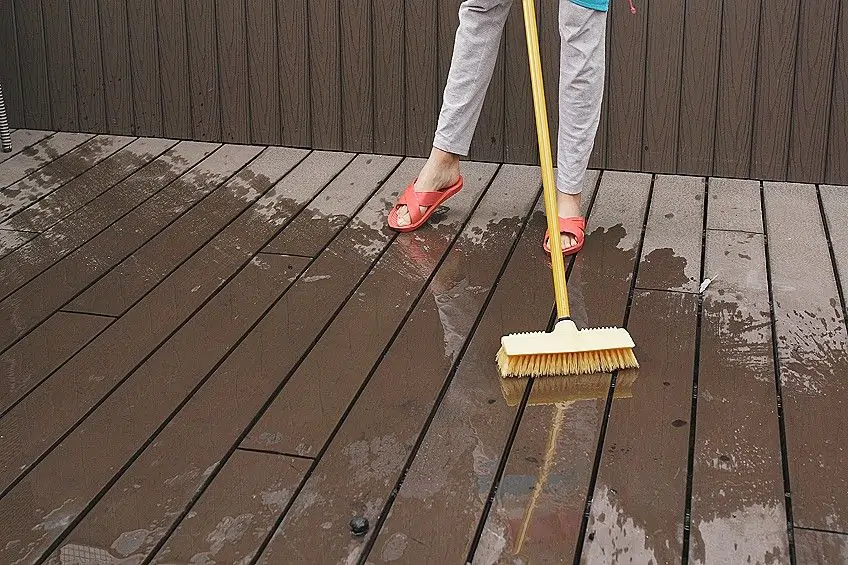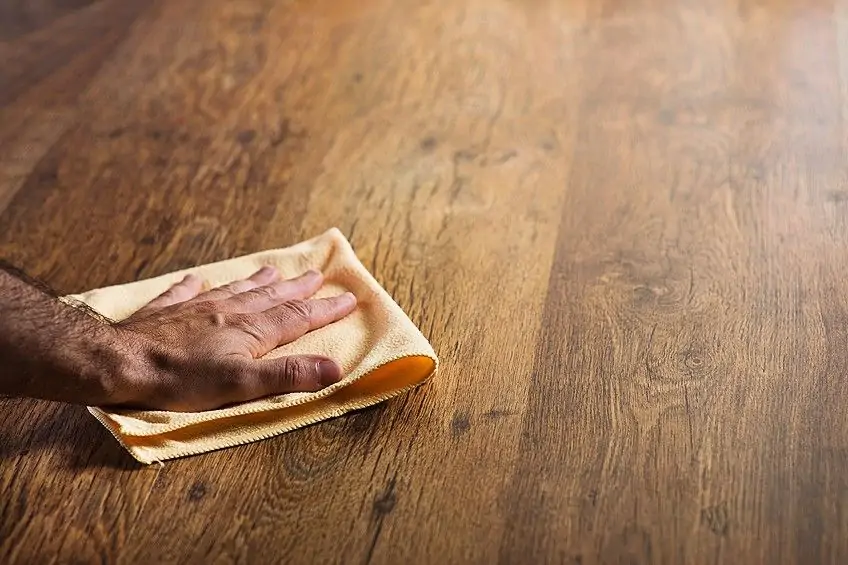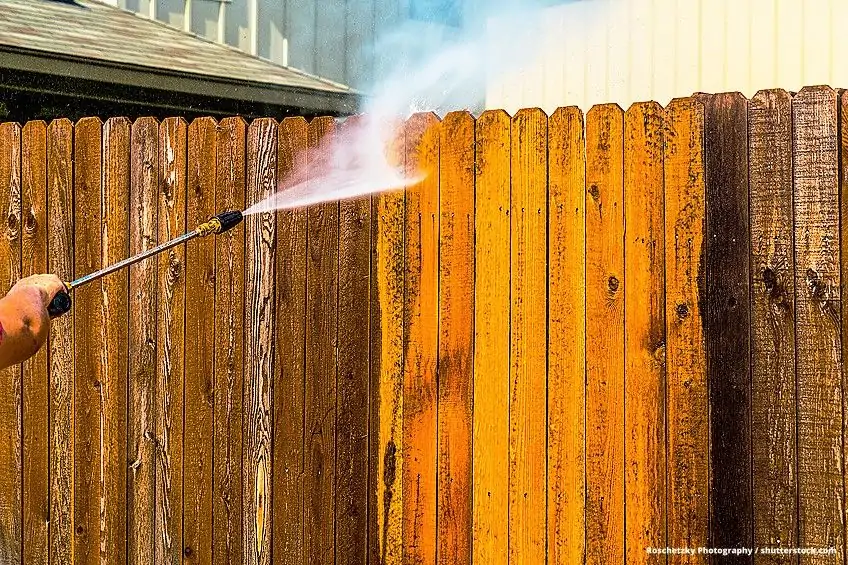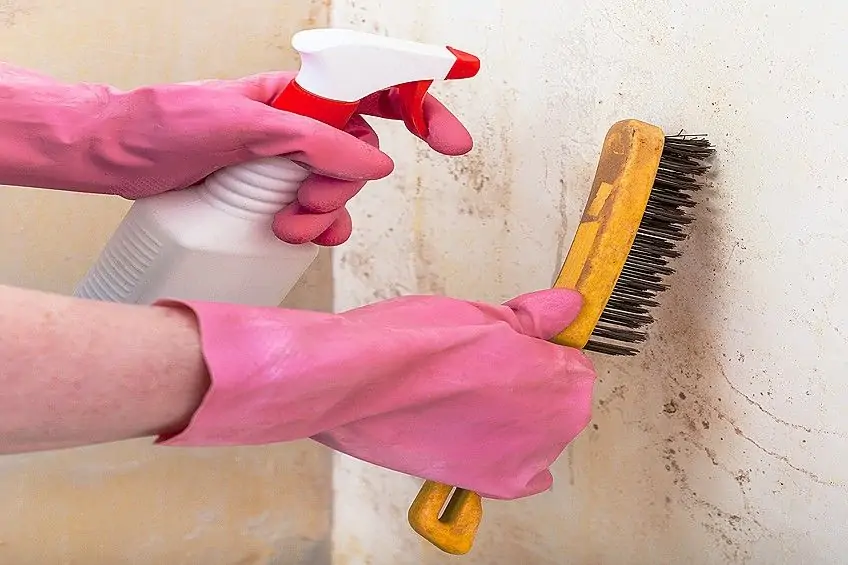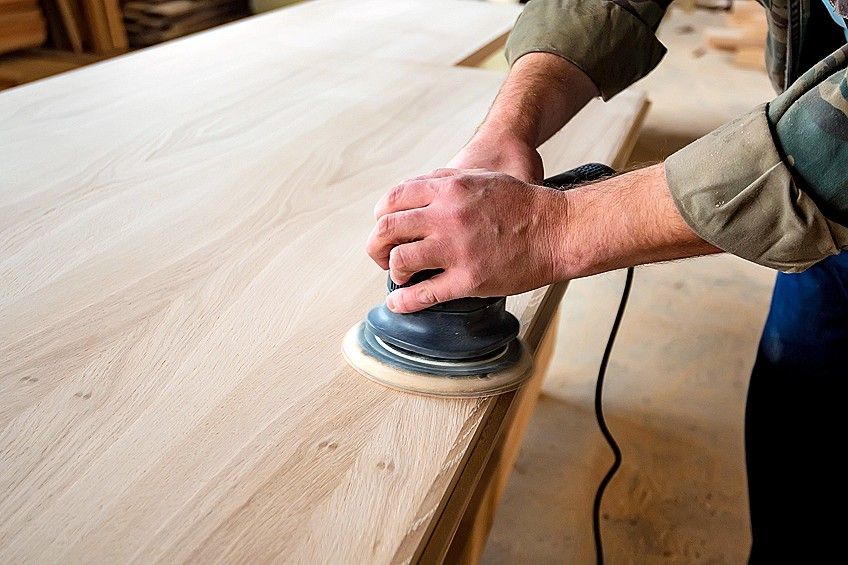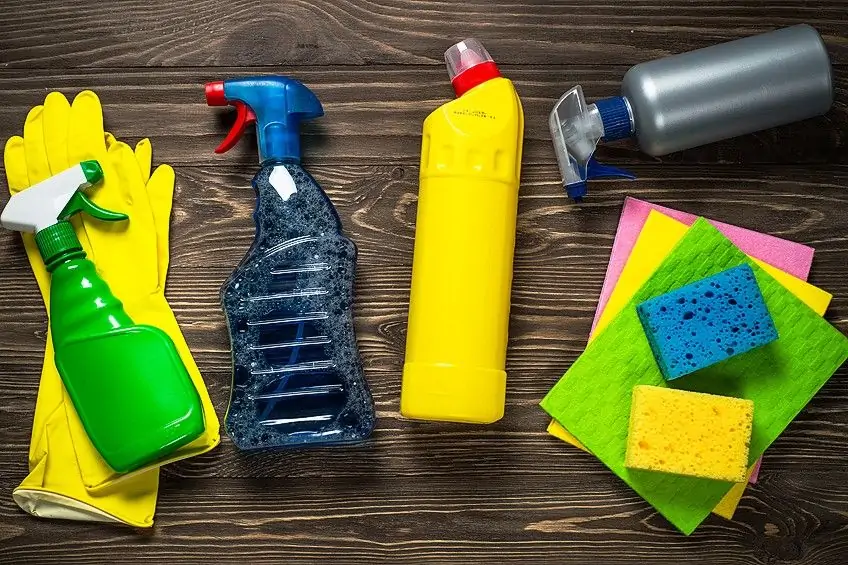How to Remove Polyurethane from Wood – The Best Polyurethane Stripper
This post may contain affiliate links. We may earn a small commission from purchases made through them, at no additional cost to you. You help to support resin-expert.com
Polyurethane creates a resilient coating for wood that not only preserves it for years to come but it can also bring out the natural beauty in the wood grain, as well as provide a premium glossy look to interior wood. If you want to stain the wood or perform repairs, you may need to look at using a polyurethane stripper for removing polyurethane from the wood. In this article, we will take a look at the properties of polyurethane, introduce you to the best polyurethane removers, and guide you through the process of removing polyurethane. Read on to find out more!
Table of Contents
What Is Polyurethane?
Polyurethane for wood is a liquid coating that is applied to wood to provide a protective layer. Think of it as liquid plastic. When it dries it creates a durable and cleanable surface that can last a long time. Polyurethane comes in water-based and oil-based versions. Water-based polyurethane has lower levels of VOC (volatile organic compounds) than oil-based polyurethane.
Water-Based vs. Oil-Based Polyurethane
Water-based polyurethane does not stand up against excessive heat and solvents and other chemicals. Water-based polyurethane is better suited to picture frames or bookcases – items that are not subject to cleaning chemicals or the sun’s heat. However, there are some water-based polyurethane strippers available with higher levels of resilience than others. Oil-based polyurethane tends to tint the wood more than water-based polyurethane on wood. This can bring out the natural richness of color and grain of the wood.
Oil-based polyurethane is generally more hard-wearing than water-based polyurethane. This is especially the case when it comes to resisting heat and chemicals.
Oil-based polyurethane is ideal for countertops or tabletops that are subject to the rigors of use and cleaning. Because of the oil-based polyurethane being higher in VOC than water-based polyurethane, it is best to work in a well-ventilated space. It is also best to wear a respirator when working with polyurethane. Polyurethane can be applied with a brush or a cloth. Oil-based polyurethane takes longer to dry than its water-based counterpart. While oil-based polyurethane is more durable than water-based polyurethane, it can yellow over time.
The great thing about polyurethane is that it can be applied over existing acrylic or latex paint. However, bear in mind that oil-based polyurethane can tint the color of the paint, changing its color slightly. Applying polyurethane can increase the durability of an existing coat of paint. However, it is recommended that you apply water-based polyurethane to avoid tinting the paint.
When it comes to removing polyurethane from wood, you can sand the surface until the polyurethane is removed, however, this can be a laborious task. The quickest way to remove polyurethane on wood is to use a chemical polyurethane stripper.
Before we guide you through the process using a polyurethane remover let us take a look at some of the best polyurethane strippers available.
Our Recommendations for the Best Polyurethane Strippers
Now that we understand a bit more about polyurethane it is time to find the right polyurethane remover. With all the options out there you may be finding the process of selecting the best polyurethane stripper rather tedious and time-consuming. This section aims to narrow down the options while presenting only the best products for removing polyurethane.
We have outlined some of the pros and cons of each of them in the hope that they will help you find the best polyurethane stripper for your needs. Make sure to refer to the tutorial in this article to guide you through the process of applying the chemicals stripper and successfully removing polyurethane from wood.
Fastest Polyurethane Stripper: SUNNYSIDE CORPORATION Paint and Varnish Two-Minute Remover Advanced Gel Formula
As the name suggests, Sunnyside Corporation’s Paint and Varnish two-minute remover are fast-acting, even on multiple layers of paint or polyurethane. The thick gel formulation is ideal for use on vertical surfaces and is safe to use on wood as well as many other surfaces. This one-gallon container can cover up to 100 square feet. This methylene chloride paint stripper works on a variety of different surfaces such as oil and water-based paints as well as lacquer, shellac, varnish, epoxy, and polyurethane.
- The new, safer formula is free from methylene chloride
- Stripping gel removes multiple layers of paint or varnish
- Safe to use on vertical and horizontal surfaces
PROS
- Versatile
- Methylene chloride free
- Ideal for removing polyurethane
- Compatible with vertical surfaces
- Fast-acting
CONS
- Can be messy to use
Best Environmentally-Friendly Polyurethane Stripper: DUMOND CHEMICALS Smart Strip Advanced Paint and Varnish Remover
Dumond Chemicals’ Smart Strip is biodegradable and contains zero VOCs which makes it safe to use around plants and animals. The odor-free formulation is water-based and has been manufactured with no caustic chemicals or harsh solvents. Besides being environmentally friendly, it is also effective in removing multiple layers of paint varnish, shellac, and polyurethane on wood. This pH-neutral paint stripper requires no post-strip neutralization. Make the smart choice for you and those around you – choose Smart Strip.
- Biodegradable formula is water-based, odor-free, and safe to use
- Formulated without methylene chloride and is non-carcinogenic
- Can effectively remove up to 15 coats of virtually any coating
PROS
- Odor-free
- Zero VOCs
- Water-based
- Free from caustic chemicals and harsh solvents
- Effective in removing multiple layers
CONS
- Requires a lot of stripper relative to surface
Most Convenient Polyurethane Stripper: SUNNYSIDE CORPORATION Hi-Speed Ready Strip Paint and Varnish Remover Trigger Spray
Sunnyside Corporation offers convenient trigger spray paint and varnish stripper that is ideal for those who want to get the job done fast without having to use a paintbrush. This faster and safer formula is low odor and environmentally safe. The non-drip formula is great for vertical surfaces and it gets to work in 30 minutes. Sunnyside Corporation’s Hi-Speed Ready Strip is not only conveniently packaged in a trigger spray bottle but clean-up is also simple with just water. Looking for a convenient option? Choose Sunnyside Paint and Varnish Remover Trigger Spray!
- Capable of removing up to 3 layers of oil or water-based paints
- The no-drip formula makes removing paint quick and easy
- The fast-acting stripper starts to work in about 30 minutes
PROS
- Convenient
- Ideal for vertical surfaces
- Environmentally-safe
- Low odor
- Easy cleanup
CONS
- It may take longer to work than harsh chemicals
How to Remove Polyurethane From Wood
Now that you have selected your polyurethane stripper, you are just about set to get removing polyurethane from wood. Whether you are removing polyurethane from a piece of furniture, a door, or flooring, the process is much the same. What follows is an overview to help you remove polyurethane using a paint or varnish stripper. Sanding is an option that requires no need for chemicals. However, it creates a lot of dust and can be time-consuming and laborious, to say the least. Keep reading to find out how to remove polyurethane yourself!
Preparation
As is the case with most DIY tasks, preparation is of utmost importance. To begin with, protect the surrounding area. If you are stripping polyurethane from a door while it is on its hinges you may want to lay down a drop cloth or some plastic sheeting to protect your floor and anything else you want to protect from the stripper.
If there are any fittings such as doorknobs, handles, or glass windows, you may want to remove them using basic tools.
Doing this will help you to get into all the tricky areas as well as prevent you from getting polyurethane strippers on something you would rather not. The next step is to don personal protective gear. Wearing a respirator, nitrile gloves, safety goggles, and full-coverage clothing is advised as paint strippers can be dangerous to work with. It is also best to work in a well-ventilated area. If you cannot work outdoors make sure to open all the windows and doors to ensure adequate airflow.
Apply the Stripper
If you are using a paint stripper that requires you to apply the stripper using a paintbrush, it is advised that you use an old paintbrush – one that you do not mind throwing away afterward. As a rule of thumb, chemical-based polyurethane strippers are more effective than safer water-based strippers, but they can contain toxic methylene chloride. Bear in mind that water-based polyurethane strippers may require a second application.
Apply the stripper to the polyurethane on wood liberally. The idea here is to cover the entire polyurethane surface with the stripper in a thick coat. With the tip of your paintbrush apply the paint stripper to tricky areas like corners and nooks. Once you have applied the polyurethane stripper, it is time for the product to do its job and remove polyurethane. However, you will need to give it some time to get working.
If you are using a chemical stripper it may only take about 10 minutes before you see some action but if you are using a water-based stripper you may have to wait much longer. If you feel that it is going to take six hours or more it is best to cover your project using a plastic tarp.
This will prevent the polyurethane stripper from drying out as paint, varnish, and polyurethane strippers only work when they are wet.
Scrub and Scrape
You will know when it is time to scrub and scrape by the appearance of the polyurethane on wood. It will begin to wrinkle, bubble, and lift from the surface of the wood. At this stage, you can use a paint scraper to scrape and lift the polyurethane from the wood. It is best to scrape in the direction of the wood grain. This will decrease the chance of you damaging the wood with the scraper. A plastic paint scraper is a lot safer to use than a metal one as it can be less abrasive on the wood than a steel paint scraper.
If there are areas on your wood that you are struggling to reach with your paint scrapers such as corners or decorative bits, you may want to use a small wire brush. This will help you to remove the polyurethane from these hard-to-reach areas. Steel wool works just as well, as does a scourer or scrubbing pad.
Once you have removed polyurethane from the wood there may be areas where you need to reapply the paint stripper and repeat this process. But if you have managed to remove most of it you can use an after wash for paint stripper to clean and neutralize the paint residue. If you use a water-based stripper, you will be able to get away with rinsing your project with water.
If there are any small areas of polyurethane left behind you can address these using fine-grit sandpaper.
Completion
If you use a water-based stripper, cleaning up should be simple and easy with water. Once you are satisfied that you have removed all the polyurethane from your project, you can remove the drop cloth and dispose of the stripper-soaked polyurethane gunk responsibly. If you plan on refinishing the bare wood with a stain, varnish, or paint you will need to give the entire surface a light sanding before you do so.
Make sure that the wood is dry before you apply the fresh finish to the wood as moisture can severely impair the paint’s bond to the wood. Once you have successfully refurbished your wooden project, you can reassemble your project and enjoy the satisfaction of removing polyurethane from wood and refurbishing the price all on your own!
Our Top Polyurethane Stripping Tips and Tricks
Whether you are new to stripping polyurethane from wood, or you have done it before, there are
- When selecting a paint stripper, for polyurethane you should be aware that water-based paint strippers can be less effective than chemical-based strippers. This just means that water-based strippers may just take a little longer to work.
- Vinegar can be used to remove polyurethane from the wood. The acid in the vinegar will begin to break down the polyurethane and soften it allowing you to remove the polyurethane using a scraper. However, this may not be as effective as specialized paint and varnish stripping products.
- To test if you are dealing with polyurethane, hold an acetone-soaked cotton ball against an inconspicuous area of the surface of the wood. If it begins to stick to the surface then you are dealing with shellac, lacquer, or varnish. If it does not stick, it is polyurethane.
- If you want to stain wood without removing the polyurethane finish, you should note that polyurethane seals off the pores of the wood which will inhibit the penetration of the stain. However, you will be able to apply a gel stain over polyurethane.
- When applying the paint stripper to the polyurethane, make sure to apply it liberally. Applying a thin coat will dry quickly and will not be effective at all. Paint strippers work better when they are wet. Thick coats will stay wet longer.
Polyurethane removers come in the form of chemical paint strippers which are formulated to remove oil-based and water-based paint as well as shellac, varnish, and polyurethane. Generally speaking, chemical-based paint strippers are more effective than water-based paint strippers but can be harmful to your health and the environment. The choice is yours however it is best to refer to the manufacturer’s directions and follow the necessary safety guidelines. Choosing to sand off polyurethane can be a laborious and time-consuming task but it can be done.
Frequently Asked Questions
How to get Polyurethane off Skin?
Natural oils work well in removing polyurethane from skin. If you have managed to get polyurethane on your skin, you can try rubbing vegetable oil or peanut butter on dried polyurethane. This should loosen and lift it from your skin.
How to Clean Polyurethane?
It is best to avoid using alcohol or ammonia-based cleaning detergents on polyurethane. This is because it can damage the polyurethane over time. Instead, you should opt for natural-based cleaning detergents or simply wipe the surface with a damp cloth.
Can I Remove Polyurethane by Sanding?
It is possible to remove polyurethane from wood using sandpaper. However, this can require a tremendous amount of effort. To speed the process up and to make it a bit easier on the elbow, you can use a random orbital sander.
What is the Best Way to Remove Polyurethane From Wood?
The best way to remove polyurethane from wood is to use a chemical stripper. Most paint and varnish strippers will work on polyurethane. These chemical paint strippers will not damage the wood and will be effective in lifting the polyurethane from the wood.
Do I have to Remove Polyurethane From Wood before I Apply a Stain?
Polyurethane seals off the wood which means that stain will not be able to seep into the wood. If you want to avoid removing polyurethane from wood and you do not mind going a shame darker you can apply a gel stain. This type of stain does not need to penetrate the wood and will bond to polyurethane.


